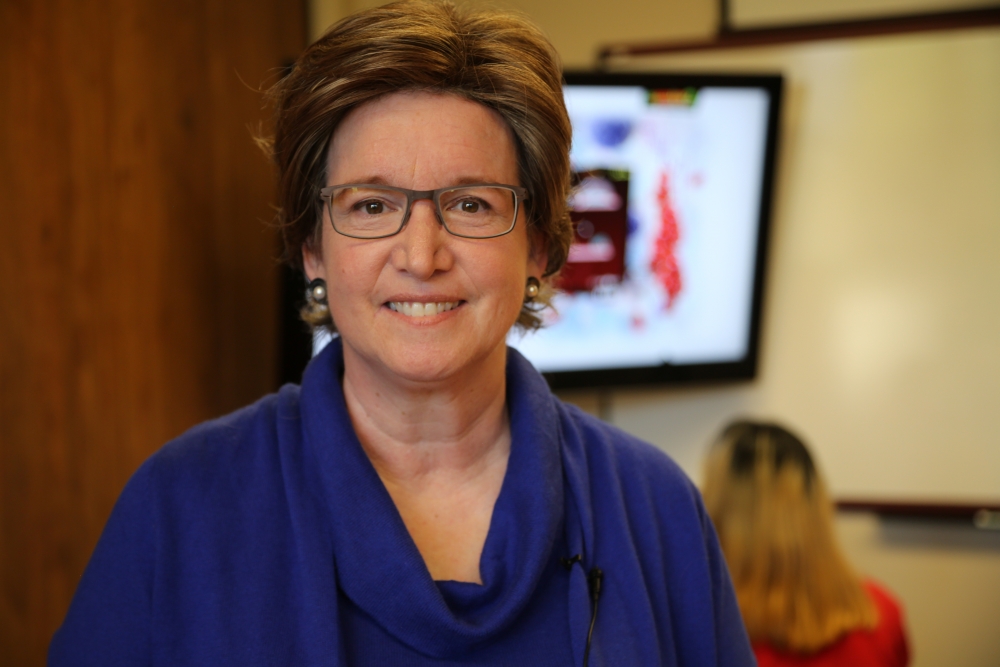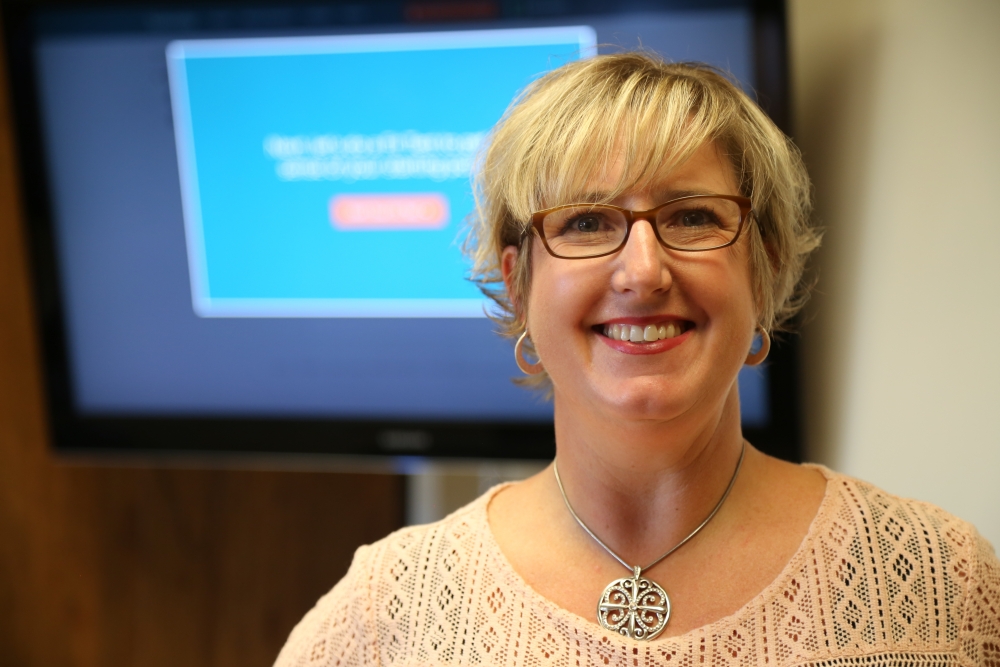The Games People Play


Want to add some adventure to your daily run? Try jogging through a zombie apocalypse with “Zombies, Run!” Looking for a personal trainer who will be available 24/7 and won’t cost an arm and a leg? Check out Nike+ Kinect Training.
Video games have come a long way since Pac-Man and Space Invaders. As technology has advanced by leaps and bounds so have storylines, graphics and user interfaces. Once the province of adolescent boys, this form of digital media now appeals to people of both genders and of all ages. What’s more, it has found applications in a host of areas such as K-12 learning, health education in hospitals and clinics, physical therapy and rehabilitation at home, psychotherapy and counseling, workplace training, op-ed journalism and crowdsourcing for scientific discovery.
The impact of video games — and digital media in general — as well as their boundless potential to engage and entertain in ways that enrich people’s lives, is the focus of the newly established Center for Digital Games Research at UC Santa Barbara.
“Many of our affiliated faculty members investigate players’ cognitive and emotional responses to digital media and games, and how these responses can be used to advance player knowledge, skills, attitudes and behavior as a way to move design and implementation forward,” said Debra Lieberman, Ph.D., the center’s director and a researcher at UCSB’s Institute for Social, Behavioral, and Economic Research.
Supported by seed money from the Robert Wood Johnson Foundation, the Center for Digital Games Research studies digital media and games from a multidisciplinary perspective. Faculty affiliates bring a wide range of expertise in areas such as human-computer interaction, virtual environments, simulations, social networks, data mining, interactive storytelling and narrative, media neuroscience, and behavioral health.
“Our research contributes to the evidence-based design of digital media and games to improve their quality and effectiveness and to serve the needs and abilities of end users,” said Lieberman, who is also a lecturer in UCSB’s Department of Communication. Her own research is focused on processes of learning, motivation and behavior change with interactive media and games, with special interests in the design of games for health and learning.
The current grant from the Robert Wood Johnson Foundation follows its 2007 award that established at UCSB a six-year, $8.25-million national program called Health Games Research, with Lieberman serving as director. She and her team provided scientific leadership in the emerging health games field and funded 21 research projects across the country that studied the design and effectiveness of health games.
“The field has grown enormously, and the research has, too,” said Lieberman. “UCSB saw an opportunity to continue our work in a way that would include the university’s faculty from many academic disciplines and would bring together their wide range of research and development expertise. The Robert Wood Johnson Foundation liked the idea and provided start-up funding to help us establish the center.”
“As we work to build a Culture of Health, digital games — which are ingrained in the daily lives of Americans across the ages — have a role in helping us make healthier decisions and foster healthier lifestyles,” said Paul Tarini, Robert Wood Johnson Foundation senior program officer. “We have good evidence that games can be used to improve health. The Center for Digital Games Research will put that knowledge to work, guiding gamers and designers in developing the next generation of health games.”
The center at UCSB is novel in its research approach. “We wanted the word ‘research’ in the name of our center because it is fundamental to what we do. Building an evidence base that leads to effective principles of game design is essential to creating interactive media and games that will engage, entertain and inspire people and will immerse them in compelling and impactful virtual experiences.”
UCSB’s center is novel also in its interdisciplinary nature. Affiliated faculty members — 30 so far — cut a broad swath across campus, with home departments in the physical and biological sciences, computer and engineering sciences, social and behavioral sciences and the arts and humanities. “We now have a wide range of expertise and initiatives,” Lieberman continued. “And we’re working with a variety of digital media.”
Take Frank Doyle’s research, for example. The professor and chair of chemical engineering is working with his team to develop an artificial pancreas as a way of delivering insulin to individuals who have Type-1 diabetes. “This is a profound change in their treatment because they’re letting technology manage their disease,” Doyle said.
But what do video games have to do with an artificial pancreas? Plenty, it turns out.
“One of the biggest challenges in introducing this technology to our subjects is the behavioral aspect of presenting complex digital technology to individuals who are not necessarily engineers or computer experts,” he continued. “Using digital games as a training medium to make the subjects more comfortable — particularly the adolescents and children — we think is a beautiful marriage between the engineering technology we have and the behavioral and digital games research going on at the center.”
Doyle cited a recent grant from the National Institutes of Health that specifically addresses the behavioral issues related to the technology. “So it’s not just engineering, it’s not just clinical. It’s the human aspect,” he said. “We have the engineering team working on algorithms, we have medical doctors testing the technology in the clinic, and then we have scientists working on the behavioral dimension — the interface between the human and the technology. There’s a profound link between what we’re doing and the behavioral aspects that come out of things like digital games research.”
Other research projects connected to the Center for Digital Games Research are looking at topics such as the changes that occur in the brain when people are using media; the design of cellphone sensors that can contribute to health behavior change and health self-monitoring; and even the use of tablet games for learning English.
In Matthew Turk’s Four Eyes Lab at UCSB, research focuses on interactive technologies using sensing and other techniques to communicate with people in ways that normal computing doesn’t. “Our biggest overlap with the center,” the professor of computer science explained, “is to introduce new kinds of technologies into the gaming environment — sensing people, understanding their identity, their motion, their activities, and also sensing the world, building models of the world so we can bring the physical space into the gaming scenario.”
A good example of that is augmented reality, continued Turk, who is also a faculty member in the campus’s Media Arts and Technology Program. “In augmented reality we’re dealing with mixing computer-generated imagery with some sort of display of reality, maybe on a mobile device or a computer screen.”
The same augmented-reality technologies that make video games more, well, realistic have other applications as well. Remote collaboration — people trying to work on things together when those things involve the physical space around them — is only one example. “Take for example a repair task or something similar. It doesn’t work very well with Skype or some 2-D-oriented conferencing,” Turk explained. “But when we can model the local world and let people interact spatially rather than just through 2-D imagery, something that’s very relevant to gaming could be transformational for video-based communications.”
It could also transform remote medicine and the ability of a physician in, say, Baltimore to lend medical expertise to a patient in South Africa. “That’s an area where the gaming technologies have a real clear use in lots of areas in the world,” Turk said.
In addition to conducting research and development, the Center for Digital Games Research maintains an online searchable Health Games Database that provides information about hundreds of health games and hundreds of related publications, resources, organizations and events. “The database has been widely used over the past several years and we have received very positive feedback from our users, who appreciate having a comprehensive collection of games-related resources assembled in one place that is easy to use and navigate,” said Erica Biely, the center’s associate director.
“All these pieces — the database, the broad multidisciplinary research, the application of research to advance the design of media, games and related technologies — come together in a center that is building our understanding of the ways interactive media and games affect our lives today and how we can improve them and innovate with them in the future,” Lieberman said.



